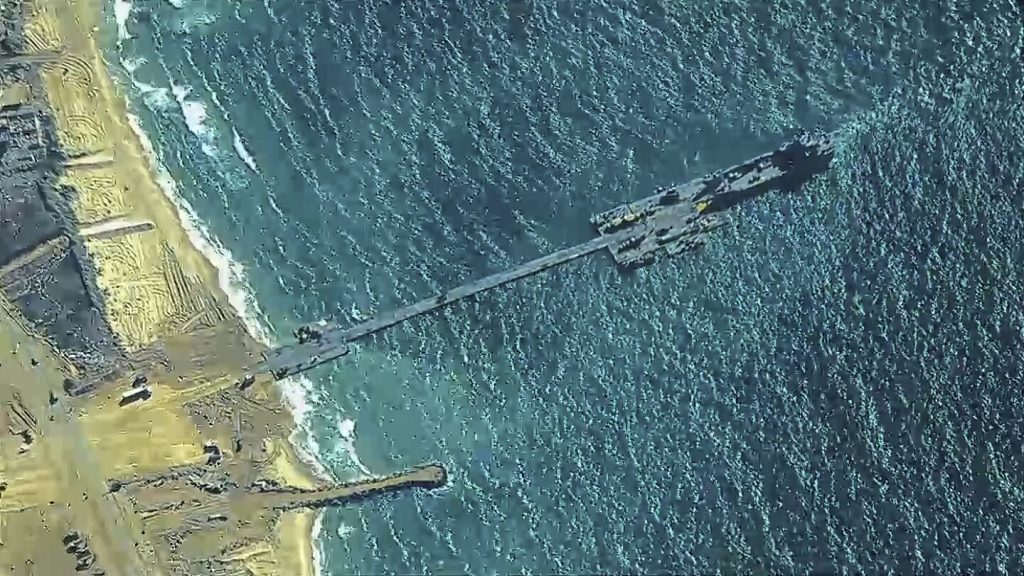A U.S.-built pier has been established to bring humanitarian aid to Gaza by sea, but the effectiveness of this new route remains to be seen as deliveries need to start reaching the starving Palestinian population. The trucks that will utilize this sea route will face various challenges, including intensified fighting, threats from Hamas, and uncertainty regarding safety from Israeli forces. Despite the hopes for the sea route, it is acknowledged by U.S, U.N., and aid officials that it will only provide a fraction of the aid that is needed in Gaza, where the situation has escalated into a humanitarian crisis due to restrictions on land crossings and ongoing conflict between Israel and Hamas.
The prewar average of aid deliveries to Gaza was over 500 truckloads per day, but currently, the U.S. military aims to start with about 90 truckloads a day through the sea route, gradually increasing to about 150 trucks a day. However, international experts have warned that the entire population of Gaza is suffering from severe food insecurity, with a significant portion facing catastrophic levels of lack of food and clean water. The conditions in north Gaza have been described as a famine, highlighting the urgent need for increased aid deliveries to prevent further loss of life, especially among vulnerable groups such as children.
While the sea route is expected to provide aid to around half a million people, which is roughly one-fifth of Gaza’s population, there are various challenges that need to be addressed for the route to function effectively. The U.N. is set to take charge of the aid once it arrives, but concerns have been raised about maintaining neutrality, especially considering the involvement of the Israeli military in facilitating the sea route. Aid groups are also facing security threats in Gaza, with recent attacks on humanitarian workers raising questions about the safety of aid distribution in the region.
The surge in violence in Gaza further complicates the situation, with the ongoing conflict potentially impacting the operation of the maritime aid route. The necessity of fuel for aid delivery has been highlighted, as without it, all aid distribution in Gaza is at risk of being halted. The U.S. government, the U.N., and aid organizations have appealed to Israel to allow more aid through land crossings and to coordinate with aid groups to ensure safe delivery of humanitarian assistance to those in need. The focus remains on finding the most efficient and reliable routes for aid delivery to prevent a deeper humanitarian crisis in Gaza.
Despite Israel’s claims that it does not place limits on humanitarian aid entry, challenges such as ongoing fighting, security threats, and disruptions caused by Hamas attacks have hindered the flow of goods into Gaza. Pressure from the U.S. has led to the opening of additional crossings by Israel to deliver aid to the northern Gaza region, but there is still a need for greater cooperation and coordination to ensure consistent and effective aid distribution. The international community continues to advocate for increased access to land crossings to address the urgent needs of the civilian population in Gaza and prevent further suffering.


